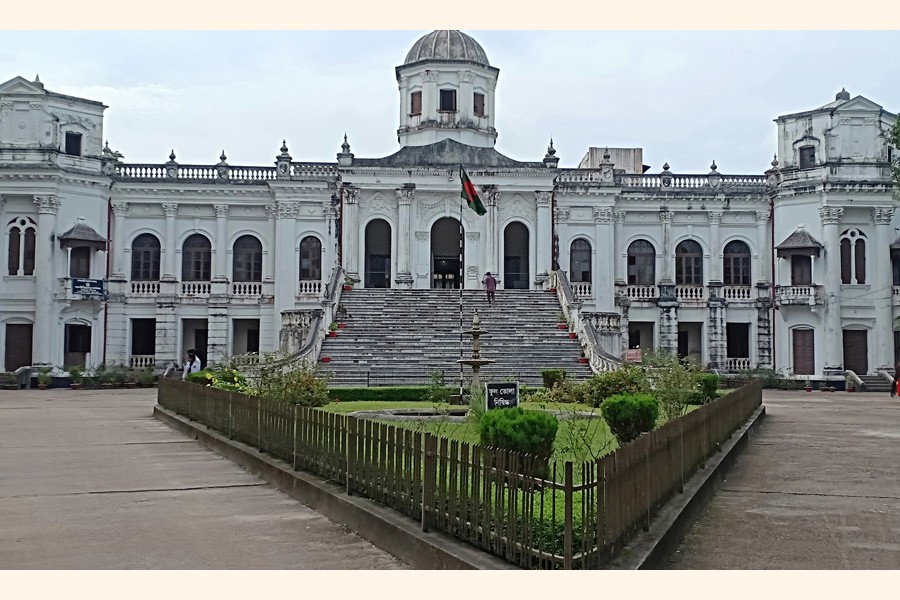RANGPUR, Sept 19: "A thing of beauty is a joy forever", a famous quote of English romantic poet John Keats, is pretty well pertinent to Tajhat Palace in Rangpur as the historic site still leaves the visitors breathless with its majestic scenery and objects representing a unique culture.
Popular by another name, the Zamindar Bari in Tajhat, three killometres off Rangpur city, the palace stands quite as an epitome of historic spendour.
The palace was built by Maharaja Kumar Gopal Lal Roy at the beginning of the 20th century.
He was a successor to Manna Lal Roy, the founder of Zamindar families in Tajhat as well as in some other areas of Rangpur.
Maharaja Gopal had appointed 2,000 workers to complete the work of his royal palace.
It is known from the history of ancient Rangpur that Manna Lal Roy was obliged to emigrate and settle at Mahiganj, the then headquarters of Rangpur district.
He came to Mahiganj in quest of diamond, jewelry and gold trading. After selling many of his properties in Punjab, he transferred his business to Mahiganj.
Gradually, he prospered and became one of the most influential persons of the city.
Later, Mahiganj turned into a famous business hub.
Then, with the decree of the British government, he established his rule as the zamindar of Rangpur and its surrounding districts.
At first, he did the business of various types of precious diamond. He used to sit here for the sale of Taj, jeweled crown, in haat or local market.
The name of the place 'Tajhat' perhaps came from his profession. 'Taj' means 'crown', and 'hat' means 'local market'.
This two- storey and east-face palace is 76.20 meters long in the front side. The 15.24m wide staircase in the middle leads directly above the portico to the first floor made with white marble.
The beautiful palace is crowned by ribbed conical dome with a tall octagonal neck in midst of the roof supported by a series of slender semi-Corinthian columns. It has 22 large rooms.
The balcony roof above the porch is supported by four graceful Corinthian columns with round shafts. The palace is laid out in the form of English "U" with its open end to the west.
Beyond the entrance at the ground floor there is a large hall. There is rounded pillar in the south and north side. In the front side there is a fountain made with marble stone.
From 1984 to 1991 the palace housed the High Court. In 1995, the palace was declared as a protected monument by the Department of Archeology.
Taking into consideration the historical and architectural importance of the palace, the then government shifted the Rangpur Museum to the second floor of the palace in 2005 with ancient inscriptions, artifacts and coins.
The main room at the top of marble stairs has a good number of display cases which show 10-11 century artifacts. There are a number of fine examples of Sankskrit and Arbic manuscripts.
Presently, it has become a very popular place where a large number of visitors from across the country come every day.
Hasibul Hasan, custodian of the zamindar bari, said this magnificent archeological heritage bears the testimony of cultural loftiness and supremacy of people's mental faculty.
The palace is now under the supervision of the Department of Archeology.
Around 500 to 600 people come to visit the Zamindar Bari each day, he said.
The entry fee for boys and girls is Tk 20. The palace witnesses increased number of visitors during holidays and winter season, he added.


